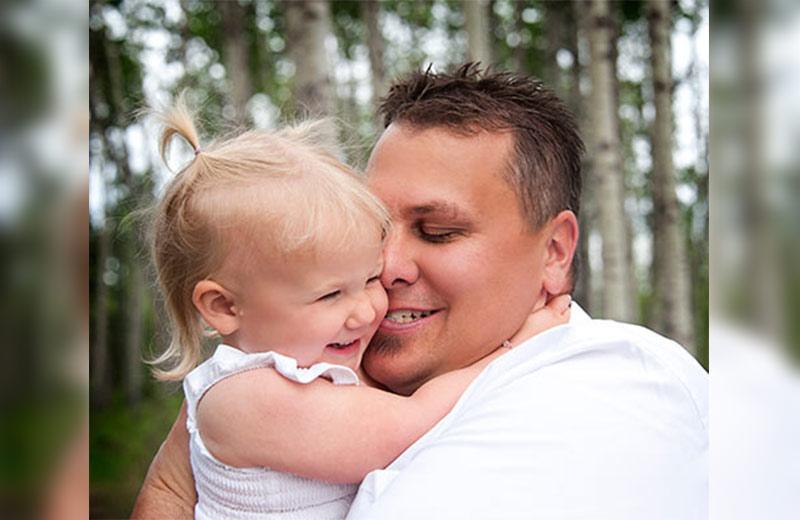Have you ever been told that carrying or holding your baby too much will spoil them? This is a common myth held by many parents and caregivers. In fact, the opposite is true!
Research has shown that well-loved babies do better in every way. The first six months are an important time for you and your baby. Take time to give love, hugs, smiles and lots of reassurance. Emotional attachment is one of the keys to raising a happy, confident child.
The BC Healthy Child Development Alliance has some simple steps you can take to help ensure a good, close connection with your baby:
Spend time face-to-face with your baby
- Spend time watching what your baby does and responding to facial expressions and sounds by imitating them.
- Take time each day to cuddle and play with your baby up close.
- Talk to your baby. Research shows that the more words a baby hears each day, the better they learn.
Observe your baby
Watch and listen to your baby to learn what your baby wants or needs. Here are some cues to what your baby is "saying" to you:
- Cries, has wide open eyes, stiffens body, arches spine or turns away from you: "I am in distress, upset or afraid."
- Frowns, starts to cry, pulls away: "I am upset, lonely, sick or hurt."
- Reaches for you, follows you (if a walking toddler), face has a sad look – maybe a trembling lip: "I need you."
- Smiles, giggles, gazes at you, reaches for you, makes cooing sounds: "I like that."
- Turns away, does not want eye contact: "I need rest."
Notice the cues that say "distress"
- Babies who are in distress and whose parents respond promptly (within 1-2 minutes) cry less after the first year.
- Babies beyond four months old can handle short periods of mild distress; giving them a chance to calm themselves helps them to learn new skills and to sleep longer periods at night.
Delight in your baby
- Help your baby explore and play by finding ways to play together (e.g., stacking cups or playing with blocks or stuffed toys).
- Welcome your baby when he or she needs to cuddle or comes to you for comfort.
Get down on the floor with your baby
- Every baby needs "tummy time" on a mat or blanket set on the floor. This is a time when your baby will exercise muscles or discover new ways to move.
- Spend time watching what your baby does and respond to your baby's cues.
For more information and to learn more ways to build attachment and help your child adjust to their emotions, visit:
- Baby's Best Chance: Parents' Handbook of Pregnancy and Baby Care
- Healthy Families BC
- Toddler's First Steps: A Best Chance Guide to Parenting Your 6-to-36 Month-Old Child
This article was originally published in Healthier You magazine.














Comments